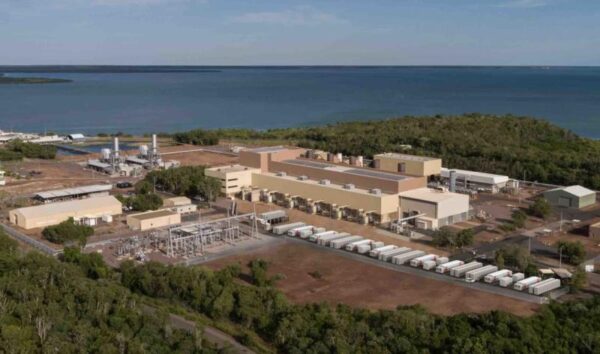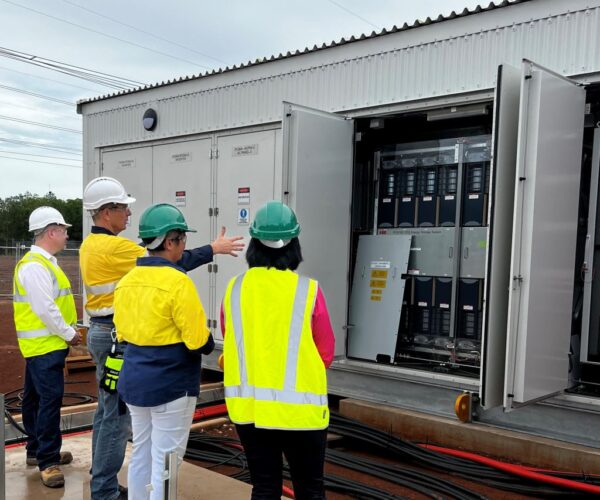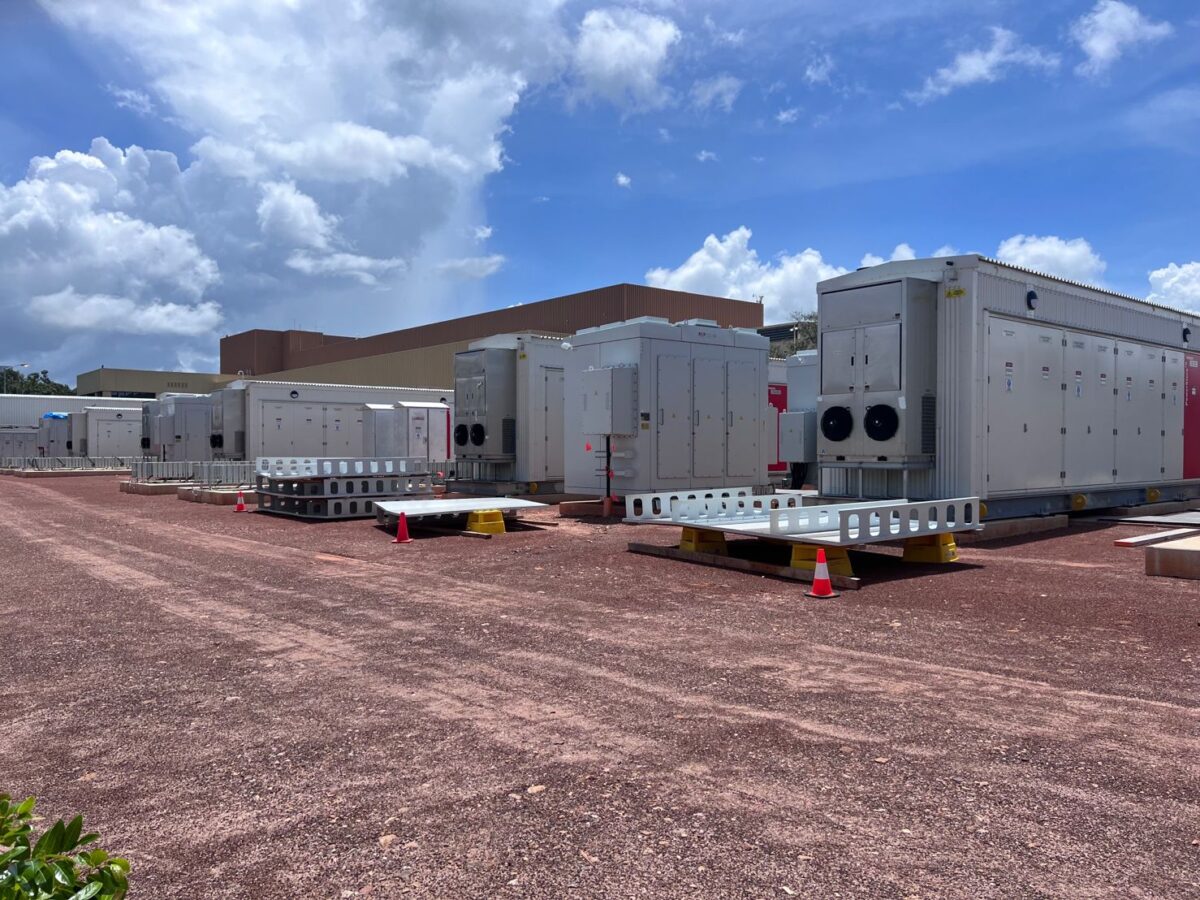The Northern Territory (NT) government has confirmed that all 192 batteries have been installed for the $45 million (USD 29.95 million) Darwin-Katherine Battery Energy Storage System (DK BESS) being built adjacent to government-owned energy utility Territory Generation’s Channel Island Power Station and the first stages of pre-commissioning are now underway.
A temporary power supply has been established for pre-commissioning testing on the eight battery enclosures, each comprising a bank of 24 batteries, a set of inverters and a step-up transformer. Using the temporary power supply in combination with an AC/DC power converter, the battery modules will be charged and discharged to test all their functions before being connected to the 11 kV switch room.
Territory Generation Chief Executive Officer Gerhard Laubscher said network-connected commissioning of the DK BESS, being delivered by the Swiss-headquartered Hitachi Energy, is scheduled to commence later this year and the battery is expected to be fully commissioned and online in the 2023-24 financial year.
“We recognise commissioning is a complex and time intensive process and we are working closely with all stakeholders to support the fastest possible progression of these activities,” he said.
Laubscher said once fully operational, the 35 MW battery will strengthen the region’s largest grid, unlocking further capacity for households to connect their rooftop PV and for industry to invest into lower cost solar systems for the commercial and industrial operations. The Darwin-Katherine electricity system provides energy to 150,000 Territorians, and one in six customers already have rooftop solar.
“The DK BESS is key to unlocking flexibility in our generation fleet,” Laubscher said. “Once commissioned, it will be online continuously, helping to stabilise the impacts of solar and support the integration of more into the Darwin-Katherine grid.”

Image: Territory Generation
The battery will also reduce the dependence on fossil-fuels generation, replace a generating unit at the gas-fired Channel Island Power Station in Darwin Harbour.
The DK BESS will use Hitachi Energy’s virtual synchronous machine or grid-forming technology. The technology gives batteries the capacity to help stabilise the grid by providing inertia and frequency control services which have until historically been provided by gas or coal-fired generators.
Hitachi Energy’s country manager in Australia, Bernard Norton, said the DK BESS will ensure full utilisation of solar energy generation and less reliance on fossil fuels.
“Through this partnership approach with Territory Generation, Hitachi Energy is helping to solve the challenge of integrating intermittent renewable energy generation and accelerating the transition towards a carbon-neutral energy future for all,” he said.

Image: Territory Generation
NT Energy Minister Selena Uibo welcomed the milestone, saying the battery is an important step forward in the government’s plan for 50% renewable power by 2030 and net zero emissions by 2050.
“This battery energy storage system will put about 35 MW into the Darwin system, which means we can reduce the gas turbines spinning and reduce the amount of fossil fuels being burnt,” she said.
“When operating, the big battery is expected to support system security for about 150,000 homes between Darwin and Katherine and it will provide Territorians with greater system reliability and cleaner, green energy.”
Using the DK BESS instead of a gas turbine is expected to reduce carbon emissions by about 58,000 tonnes annually. Uibo said the big battery is also forecast to deliver cost savings of about $9.8 million per year, paying for itself in about five years from connection to the grid.
This content is protected by copyright and may not be reused. If you want to cooperate with us and would like to reuse some of our content, please contact: editors@pv-magazine.com.









2 comments
By submitting this form you agree to pv magazine using your data for the purposes of publishing your comment.
Your personal data will only be disclosed or otherwise transmitted to third parties for the purposes of spam filtering or if this is necessary for technical maintenance of the website. Any other transfer to third parties will not take place unless this is justified on the basis of applicable data protection regulations or if pv magazine is legally obliged to do so.
You may revoke this consent at any time with effect for the future, in which case your personal data will be deleted immediately. Otherwise, your data will be deleted if pv magazine has processed your request or the purpose of data storage is fulfilled.
Further information on data privacy can be found in our Data Protection Policy.